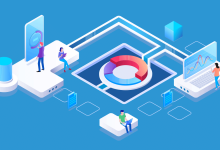Author: Talabuyev Y.
In 2025, cybersecurity remains one of the most critical strategic priorities for both businesses and government entities. The number of current cybersecurity threats has significantly increased over the past few years, affecting not only companies but also public institutions and critical infrastructure facilities.
- What current cybersecurity threats should we prepare for?
- Regional Specifics of Threats
- How to Strengthen Protection Against Current Cybersecurity Threats?
What current cybersecurity threats should we prepare for?
We analyzed several reports and identified the most likely cyber threats that definitely warrant preparation.
Rising Attacks on Critical Infrastructure
One of the most alarming trends in recent years has been the surge in current cybersecurity threats targeting critical infrastructure. Sectors such as energy, transportation, and telecommunications are increasingly becoming targets of these cybersecurity threats. According to the IBM X-Force Threat Intelligence Index 2024, the number of such attacks has risen by 30%. The predominant types include DDoS attacks, compromises of SCADA control systems, and the deployment of malicious software. These directly impact end users, causing disruptions in power grids, transportation hubs, and communication networks. In Europe, to mitigate such cybersecurity threats, the NIS2 Directive is being actively implemented, tightening security requirements for critical systems.
Artificial Intelligence: A New Weapon and a Reliable Defender
Artificial intelligence (AI) plays a dual role in the realm of cybersecurity. Malicious actors leverage this technology to craft more convincing phishing campaigns, automatically identify vulnerabilities, and bypass traditional security measures. At the same time, organizations are adopting AI-powered solutions to proactively detect current cybersecurity threats and respond to incidents automatically. According to the IBM Cost of a Data Breach Report 2024, companies utilizing AI saved an average of $2.22 million by mitigating current cybersecurity threats.

Growing Financial and Reputational Losses
The financial damage from current cybersecurity threats increased by 10% over the past year alone. Companies that experienced data breaches lost customers and faced legal disputes. The average cost of a data breach, as reported in the IBM Cost of a Data Breach Report, reached $4.45 million per incident last year.
Shifting Threat Landscape: Data Sales Over Extortion
Cybercriminals are evolving their tactics in current cybersecurity threats: per the IBM X-Force Threat Intelligence Index 2024, attacks involving stolen or compromised credentials surged by 71%. Instead of encrypting data and demanding ransoms, criminals increasingly prefer selling stolen data, with such attacks now accounting for 32% of incidents. This shift complicates defense efforts and requires companies to adopt new monitoring methods and more effective protections against current cybersecurity threats.
Looking Beyond 2025: The Quantum Threat
Peering slightly beyond 2025, a new significant threat may emerge—quantum computing. This pertains to quantum decryption, which could render public-key encryption obsolete. A device capable of revolutionizing public-key encryption—a cryptographically relevant quantum computer (CRQC)—is expected to emerge soon. Experts believe it could crack a 2048-bit RSA key in under 24 hours.
Regional Specifics of Threats
In the United States, ransomware attacks are the primary concern, causing significant damage to infrastructure and the healthcare sector, leading to severe disruptions and financial losses. In Europe, the financial sector, government institutions, and supply chains (Supply Chain Attacks) are more frequently targeted. According to the Cybersecurity Awareness Report 2024, the number of such cyber threats in European countries has risen by 20% over the past year, with manufacturing and logistics companies being particularly hard-hit.
In Ukraine, current cybersecurity threats take on an even more pronounced character amid the geopolitical conflict with Russia. Increasingly frequent DDoS attacks on government services and attempts to breach banking systems, often accompanied by leaks of customers’ personal data, have been traced back to the aggressor. This has partly spurred the development of the local cybersecurity market, as Ukrainian companies and government entities actively adopt modern practices to counter current cybersecurity threats, including widespread use of cloud solutions for secure data storage and processing.
How to Strengthen Protection Against Current Cybersecurity Threats?
Update your security policies, conduct an audit of existing processes, and implement modern solutions:
- Zero Trust Architecture, which involves continuous verification of access at the user and device levels;
- XDR (Extended Detection and Response), enabling comprehensive monitoring and automated responses to cyber threats, reducing the burden on security teams;
- Multi-Factor Authentication (MFA), which reduces the risk of account breaches by 99%.
Additionally, schedule regular employee training on protecting against current cybersecurity threats, with a focus on countering social engineering tactics.
Colobridge’s Expert:
“It’s crucial to choose a technology partner with a broad product portfolio and relevant expertise. While cybersecurity is always a shared responsibility, successfully countering cyber threats also depends on the implementation of IT infrastructure. For instance, at a client’s request, we can enable data encryption and deploy our hardware-software firewall as a service (NGFW). We also offer tools to mitigate the consequences of account compromise—clients using our Backup as a Service benefit from Veeam’s Insider Protection feature, which ensures secure data recovery even if an attacker gains account access. In the event that a severe cyber incident renders IT infrastructure unavailable, our Disaster Recovery as a Service solution allows critical services to be restored quickly on an external platform.”
In the face of a rapidly evolving threat landscape, a comprehensive and proactive approach to safeguarding against current cybersecurity threats will be the key to your company’s resilience in 2025. Discover how the Colobridge team can help you implement a reliable, stable, and secure IT infrastructure tailored to your specific security policies.





